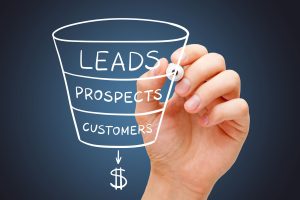In the ever-evolving landscape of digital marketing, social media managers and small business marketers often find themselves juggling multiple tasks simultaneously. One key strategy to streamline efforts and maximize audience engagement is the use of social media scheduling tools. These tools not only aid in efficient content planning but also ensure that your posts reach your audience at the optimal times. In this comprehensive guide, we will delve into the importance of post scheduling, review some top social media tools, and provide actionable tips for enhancing audience engagement.
The Importance of Post Scheduling
Post scheduling is a critical component of any robust digital marketing strategy. It allows marketers to plan their content in advance, ensuring a consistent online presence. This consistency is vital for fostering audience engagement and building brand loyalty. By scheduling posts, marketers can:
- Save Time – Automating the posting process frees up valuable time for other marketing activities, allowing you to focus on strategy development, customer interaction, and content creation rather than manually posting each update.
- Maintain Consistency – Regular posting helps keep your audience engaged and interested in your brand. Consistency in posting schedules ensures that your audience knows when to expect new content, which can significantly improve audience engagement.
- Reach Optimal Times – Scheduling tools can help you determine the best times to post for maximum visibility and engagement by analyzing when your audience is most active. This ensures that your content is seen by the largest possible audience.
- Track Performance – Many scheduling tools offer analytics that can help you measure the success of your posts and adjust your strategy accordingly. This data-driven approach allows for continuous improvement and more effective content planning.
Moreover, post scheduling can significantly reduce the stress associated with maintaining an active social media presence. By planning and scheduling content in advance, marketers can avoid the last-minute rush to create and post updates, leading to higher quality and more thoughtful content.
Top Social Media Scheduling Tools
There are numerous social media tools available, each offering unique features tailored to different needs. Here, we’ll explore some of the most popular and effective scheduling tools that can help you boost your digital marketing efforts.
Hootsuite
Hootsuite is one of the most well-known social media tools, offering a comprehensive suite of features for post scheduling, content planning, and performance tracking. Its user-friendly interface makes it easy to manage multiple social media accounts from a single dashboard.
- Features: Bulk scheduling, analytics, team collaboration, and social listening. Hootsuite’s social listening capabilities allow you to monitor brand mentions and industry trends, providing valuable insights for your content strategy.
- Best For: Businesses of all sizes looking for an all-in-one social media management tool. Hootsuite’s scalability makes it suitable for both small businesses and large enterprises.
Buffer
Buffer is another popular tool known for its simplicity and effectiveness. It allows marketers to schedule posts across various social media platforms and provides insightful analytics to help optimize future content.
- Features: Easy scheduling, detailed analytics, and a clean, intuitive interface. Buffer’s browser extension also makes it easy to share content from anywhere on the web directly to your social media profiles.
- Best For: Small to medium-sized businesses seeking a straightforward scheduling tool. Buffer’s user-friendly design is ideal for teams without dedicated social media specialists.
Sprout Social
Sprout Social offers a robust set of features designed to enhance audience engagement and streamline social media management. Its advanced analytics and reporting capabilities make it a favorite among digital marketing professionals.
- Features: Post scheduling, social listening, in-depth analytics, and CRM integration. Sprout Social’s CRM features allow you to manage and analyze customer interactions, providing a more personalized approach to audience engagement.
- Best For: Medium to large businesses looking for comprehensive social media management and reporting tools. Sprout Social’s advanced analytics are particularly useful for data-driven marketing strategies.
Later
Later is a visually-oriented scheduling tool that is particularly popular among brands with a strong focus on Instagram. It offers a drag-and-drop calendar for easy content planning and scheduling.
- Features: Visual content calendar, Instagram-specific tools, and hashtag suggestions. Later’s visual approach makes it easy to see how your feed will look before the content is published, ensuring a cohesive brand aesthetic.
- Best For: Brands and influencers heavily focused on visual content and Instagram marketing. Later’s emphasis on visual planning makes it perfect for industries such as fashion, food, and lifestyle.
Tips for Maximizing Audience Engagement
Utilizing social media scheduling tools is just the first step. To truly maximize audience engagement, consider the following tips:
Know Your Audience
Understanding your audience is crucial for effective content planning. Use analytics from your social media tools to gain insights into your audience’s preferences, behaviors, and peak activity times. Tailor your content to meet their interests and needs.
- Conduct Surveys – Regularly conduct surveys and polls to gather direct feedback from your audience. This can provide invaluable insights into their preferences and expectations.
- Analyze Competitors – Study your competitors’ social media strategies to identify what works in your industry. This can help you refine your approach and find new ways to engage your audience.
Optimize Post Timing
Different social media platforms have different peak times for user activity. Use the data provided by your scheduling tools to post when your audience is most active. This can significantly boost visibility and engagement.
- Experiment with Timings – Run A/B tests by posting at different times to determine the optimal posting schedule for your audience. This data-driven approach ensures maximum engagement.
- Consider Time Zones – If your audience is spread across different time zones, schedule posts to reach them at their local peak times. This ensures that your content is seen by a broader audience.
Engage with Your Audience
Scheduling posts is not a set-it-and-forget-it solution. Actively engage with your audience by responding to comments, messages, and mentions. This interaction helps build a loyal community around your brand.
- Respond Promptly – Quick responses foster a sense of community and show that you value your audience’s input. This can significantly enhance audience loyalty and engagement.
- Encourage User-Generated Content – Encourage your audience to share their own content related to your brand. User-generated content can provide social proof and enhance community engagement.
Use High-Quality Visuals
Visual content tends to perform better on social media. Invest in high-quality images, graphics, and videos to make your posts more appealing and shareable.
- Professional Photography – Consider investing in professional photography to ensure your visuals are of the highest quality. This can significantly improve the overall aesthetic of your social media profiles.
- Graphic Design Tools – Use graphic design tools like Canva or Adobe Spark to create eye-catching visuals that align with your brand identity. These tools can help you produce professional-quality graphics even with limited design skills.
Analyze and Adjust
Regularly review the performance of your posts using the analytics provided by your social media tools. Identify what works and what doesn’t, and adjust your strategy accordingly. Continuous improvement is key to sustained engagement.
- Monthly Reports – Generate monthly performance reports to track your progress and identify trends. This allows you to make informed decisions and refine your strategy over time.
- Set Clear Goals – Establish clear, measurable goals for your social media efforts. This helps you stay focused and ensures that your strategy aligns with your overall business objectives.
By implementing these tips and leveraging the right social media scheduling tools, you can enhance your digital marketing efforts and achieve maximum audience engagement. In the next section, we will delve further into advanced strategies and tools that can elevate your social media game even higher.
Advanced Strategies for Social Media Scheduling
Once you’ve mastered the basics of social media scheduling, it’s time to explore advanced strategies that can further enhance your digital marketing efforts. These strategies involve leveraging the full potential of your scheduling tools and incorporating innovative tactics to keep your audience engaged.
Content Repurposing
Content repurposing involves taking existing content and presenting it in a new format or on a different platform. This strategy helps you maximize the value of your content without constantly creating new material.
- Turn Blog Posts into Infographics – Convert detailed blog posts into visually appealing infographics. This not only makes the content more digestible but also increases shareability on visual platforms like Pinterest and Instagram.
- Create Video Snippets – Transform written content, such as articles or case studies, into short video snippets. These can be shared on platforms like YouTube, TikTok, or Instagram Stories to reach a wider audience.
Cross-Platform Promotion
Promoting your content across multiple social media platforms can significantly increase its reach and engagement. Each platform has its unique audience and engagement patterns, which you can leverage to your advantage.
- Customize Content for Each Platform – Tailor your content to fit the strengths and user preferences of each social media platform. For instance, use high-quality visuals for Instagram, in-depth articles for LinkedIn, and quick, engaging videos for TikTok.
- Use Consistent Branding – Ensure that your branding is consistent across all platforms. This helps in building a recognizable brand identity and fosters trust among your audience.
Leveraging Analytics for Continuous Improvement
Analytics are a powerful tool for understanding your social media performance and identifying areas for improvement. By regularly reviewing your analytics, you can make data-driven decisions that enhance your content strategy and audience engagement.
Deep Dive into Engagement Metrics
Engagement metrics, such as likes, comments, shares, and click-through rates, provide valuable insights into how your audience interacts with your content. Analyzing these metrics helps you understand what resonates with your audience and what doesn’t.
- Identify Top-Performing Content – Determine which types of content generate the most engagement. Use this information to create more of what your audience loves, whether it’s educational posts, entertaining videos, or interactive polls.
- Monitor Audience Sentiment – Use sentiment analysis tools to gauge the overall sentiment of your audience’s interactions with your content. Positive sentiment indicates that your content is well-received, while negative sentiment highlights areas for improvement.
Track Conversion Rates
Conversion rates are a crucial metric for measuring the effectiveness of your social media campaigns. Tracking conversions helps you understand how well your social media efforts are driving desired actions, such as website visits, sign-ups, or purchases.
- Set Up Conversion Tracking – Use tools like Google Analytics or Facebook Pixel to set up conversion tracking. This allows you to see how your social media traffic converts into tangible results.
- Analyze Conversion Paths – Study the paths that users take to convert. This can help you optimize your content and calls-to-action to streamline the conversion process and increase success rates.
Utilizing AI and Automation in Social Media Scheduling
Artificial Intelligence (AI) and automation are revolutionizing the way social media managers handle post scheduling and audience engagement. By integrating these advanced technologies into your social media strategy, you can achieve greater efficiency and effectiveness.
AI-Powered Content Recommendations
AI can analyze vast amounts of data to provide personalized content recommendations. This ensures that your content is highly relevant to your audience, increasing the likelihood of engagement.
- Use AI Tools – Implement AI tools that suggest content topics based on trending keywords and audience behavior. This helps you stay ahead of the curve and produce content that resonates with your audience.
- Automate Content Curation – Use AI to automate content curation. AI can identify and share relevant third-party content, keeping your social media profiles active and engaging without requiring continuous manual effort.
Chatbots for Enhanced Engagement
Chatbots can automate responses to common queries and engage with your audience in real-time. This not only improves the user experience but also frees up time for your team to focus on more complex interactions.
- Implement Chatbots – Use chatbots to handle customer service inquiries, provide product recommendations, and even assist with social media contests and giveaways. This ensures that your audience receives timely responses, enhancing their overall experience.
- Personalize Interactions – Leverage AI to personalize chatbot interactions. AI can analyze user data to provide tailored responses, making the engagement feel more personal and relevant.
Integrating Social Media Scheduling with Overall Marketing Strategy
To truly maximize the impact of your social media scheduling efforts, it’s essential to integrate them with your overall marketing strategy. This ensures a cohesive approach that aligns with your broader business goals and objectives.
Align with Marketing Campaigns
Ensure that your social media posts are aligned with your broader marketing campaigns. This creates a unified message across all channels, enhancing the effectiveness of your campaigns.
- Create a Content Calendar – Develop a comprehensive content calendar that integrates social media posts with other marketing activities such as email campaigns, blog posts, and product launches. This ensures a consistent and coordinated approach.
- Coordinate Across Teams – Collaborate with other marketing teams to ensure that your social media strategy complements other marketing efforts. This can enhance the overall impact of your campaigns and promote a unified brand message.
Measure ROI
Measuring the return on investment (ROI) of your social media efforts is crucial for understanding their impact on your business. This involves tracking key performance indicators (KPIs) that align with your business objectives.
- Set Clear KPIs – Define clear KPIs that align with your business goals, such as increased website traffic, lead generation, or sales. This helps you measure the success of your social media efforts in a tangible way.
- Use Attribution Models – Implement attribution models to understand the role of social media in the customer journey. This provides a clearer picture of how social media contributes to your overall marketing success.
Conclusion
In the fast-paced world of digital marketing, social media scheduling tools are indispensable for maximizing audience engagement and streamlining content planning. By leveraging the right tools and implementing advanced strategies, social media managers and small business marketers can achieve significant improvements in their social media performance. From understanding the importance of post scheduling to exploring advanced tactics like AI integration and content repurposing, this comprehensive guide provides the insights and actionable tips needed to elevate your social media game. By continuously analyzing performance and aligning social media efforts with broader marketing strategies, you can ensure sustained success and a strong online presence.


